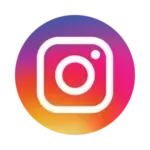
The Digital Productivity System I Use to Organize the Ideas in My Head
When you're learning new things across many different topics, the challenge isn’t just understanding the information — it’s knowing how to store, organize, and apply it all without losing your way.
After trying different ways to organize my tasks, ideas, and notes, I discovered a system that helps me stay focused without feeling trapped by hundreds of notes or to-do lists.
It’s not complicated, it doesn’t require fancy tools, and most importantly, it helps me think more clearly.
In this post, I’ll show you how I apply this system to stay organized and move forward productively in my daily life — without overcomplicating things.
Discovering Productive Systems
In recent years, I’ve been learning and working in very different fields: from video game development and artificial intelligence to book writing, marketing, and digital product design.
All of that generated a lot of ideas, tasks, references, and projects that I needed to organize more clearly and usefully.
At first, I simply took notes and saved links, but the bigger that base grew, the harder it became to find or use what I had.
Everything I wrote down ended up mixed together and forgotten.
One day I came across a book called Second Brain by Tiago Forte, and I realized the potential of organizing my knowledge in a different way.
I tried following the ideas in the book, using his folder structure method, and noticed a significant improvement. Still, there were things that didn’t fully convince me.
I had doubts about where to put certain files or notes, or some things weren’t as visible as I wanted. So I began adapting the methodology until I found a structure that really works for me.
This folder and subfolder structure, which I’ve been using for a few years now, gives me a lot of clarity when it comes to:
Knowing where to save something.
Knowing how to find what I’ve saved.
Being more productive without requiring too much effort.
So, in a simplified way, here’s my digital knowledge organization system.
Folder Structure
These are the main folders I use to store notes, tasks, and files:
Activities
Projects
References
Events
The folder and subfolder order generally goes from most actionable to least actionable.

1) Activities
This folder contains short-term information or tasks. These are the most day-to-day things and are updated frequently.
Subfolders:
Habits: Daily and weekly tasks with reminders.
Shopping: Shopping lists that I update as soon as I need to buy something.
Experiences: Notes on experiences I go through in daily life.
Ideas: Drafts of loose ideas.

2) Projects
This folder contains medium- and long-term information or tasks. These are things I plan to do in the coming weeks or months, usually more important than Activities.
Subfolders:
Personal: Medium- and long-term goals.
Work: Mandatory tasks for a job.
[Each project’s name]: Personal or client projects.
Usually, I also include an ideas subfolder inside each project.

3) References
This folder holds non-actionable information, just for reference. Usually, it's content I liked or might need to review in the future.
Subfolders:
Links: Articles I found interesting or want to read later.
Tips: Useful excerpts from articles, YouTube videos, or courses.
Books: Books I’m reading, planning to read, or have finished.
Inspiration: Inspiring content like quotes, designs, or photos.
Data: Personal or useful data for quick access.

4) Events
This folder contains important events I need quick access to. It could technically go under Activities, but since it’s something I need to pay special attention to, I prefer to keep it more visible and separate.
Subfolders:
None. If I ever have too many events, I might create subfolders.
Note: Since the Events folder is something I need to access easily due to its importance, I decided to place it last — it’s visually easier to find without having to look through other folders.

Productive Habits for This System
To make the most of this content and knowledge organization system, it also needs to be supported by habits that help you stay productive. In my case, I broadly follow these three steps:
Save: Build the habit of saving information instead of keeping it in your head.
Review: Build the habit of reviewing stored information so you don’t forget it.
Act: Build the habit of acting on the information stored to complete tasks.
Useful Apps for This System
The app I’ve been using the longest is my own notes app, Saving Notes (Android only). I developed it to be as practical as possible, and it includes infinite folder hierarchy in the Premium version.
However, I haven’t had the time to turn the app into a web version (yet), so I started using TickTick — although it has task quantity limitations even in the Premium plan, which I hope to resolve with my own app once the web version is ready.
The downside I see with TickTick is that it’s not as practical on mobile as Saving Notes.
Another option worth considering is Todoist. It has all the necessary features, but for some reason, it didn’t motivate me to keep using it.
So at the moment, I’m using these apps:
Google Drive: For longer documents or files that require multiple pages and/or formatting.
TickTick: For content that requires more typing, better handled with a keyboard.
Saving Notes: For quick ideas, thoughts from podcasts or books, quick-access data, or quick task lists.
In the future, I’d like to have Saving Notes available for Android, iOS, and Web, and replace TickTick entirely. I’d even like to explore integrating document generation and syncing with Google Drive.
Conclusion
Everything I learn, create, or plan goes through this system. It’s the space where I can offload ideas without losing them, and where I return when I need clarity.
Thanks to that, I can spend more time taking action and less time figuring out where everything is.
Try it for a while, and then let me know how it transforms your day.

